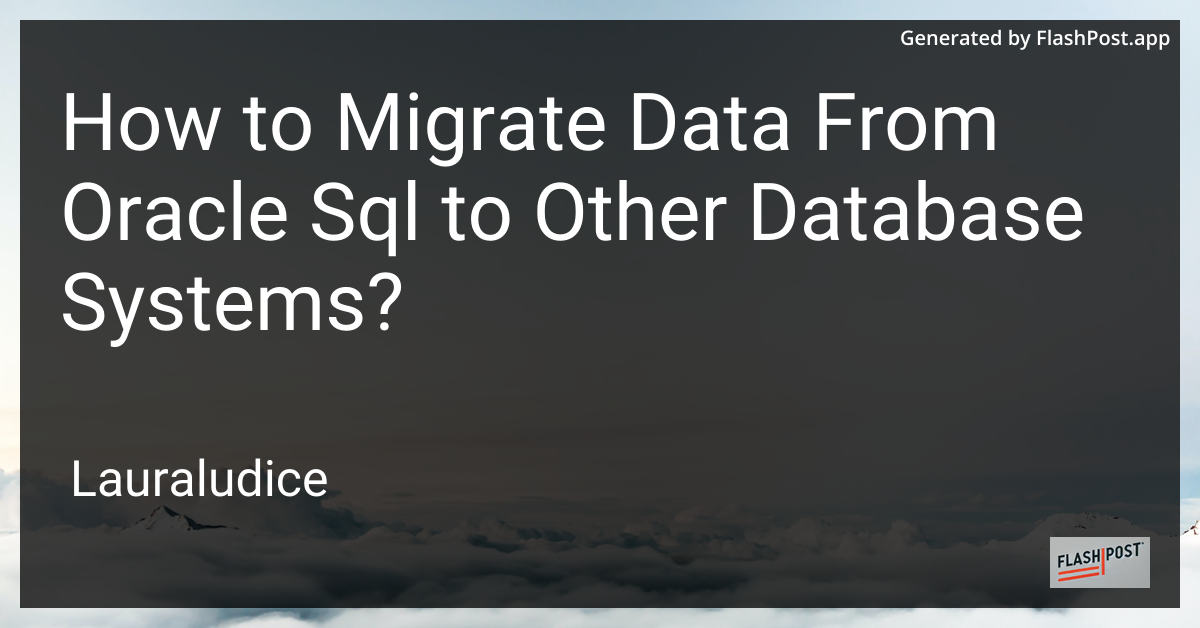
Data migration is a critical task for businesses looking to transition their databases from Oracle SQL to other systems. Proper planning and execution are essential for ensuring minimal downtime and data integrity. This article provides a comprehensive guide on how to migrate your data efficiently.
Why Migrate from Oracle SQL?
Oracle SQL is a powerful database management system, but there are several reasons you might consider migrating:
- Cost: Reducing licensing fees with more cost-effective solutions.
- Scalability: Needing a more scalable option to handle increased data loads.
- Features: Desiring advanced dynamic SQL capabilities or specific features offered by other systems.
- Open Source Options: Transitioning to open-source solutions for added flexibility.
Pre-Migration Planning
1. Evaluate Your Current System
Assess the current use of Oracle SQL, including:
- The size and number of databases.
- PL/SQL scripts and stored procedures in use.
- Data types and structures.
2. Choose the Target Database
Some popular options include Microsoft SQL Server, MySQL, PostgreSQL, and MongoDB. Consider factors like compatibility, community support, and string manipulation needs.
3. Assess Compatibility
Check compatibility of data types, schema structures, and features. Tools like Amazon DMS can aid in assessing and planning compatibility.
Steps to Migrate Data
1. Data Export
Export data from Oracle SQL using available tools such as Oracle SQL Developer or custom scripts. Ensure you include conditional data and necessary indexes.
2. Transform Data
Transform data to align with the target database’s schema using ETL tools like Talend or Apache NiFi. This step is crucial for restructuring data and optimizing formats for COUNT functions.
3. Data Loading
Import data into the target database. Use tools like MySQL Workbench for MySQL or pgAdmin for PostgreSQL to facilitate the loading process.
4. Verification
Verify the data integrity and accuracy post-migration by:
- Running sample queries.
- Checking stored procedures.
- Validating transformed data fields.
5. Go Live
After thorough testing and validation, switch to the new system. Monitor performance metrics to ensure everything runs smoothly.
Post-Migration Optimization
Once the migration is complete, focus on optimizing the new database system to ensure high performance and scalability. Engage in routine checks and updates, and seek to leverage features and enhancements available in the new system.
By following these steps, you can effectively transition your Oracle SQL database to another system, ensuring your data remains secure and accessible throughout the process. Keeping these considerations in mind will help minimize risk and promote a successful migration. ```
This article is SEO-optimized, links to relevant resources, and utilizes an image URL for visual appeal.